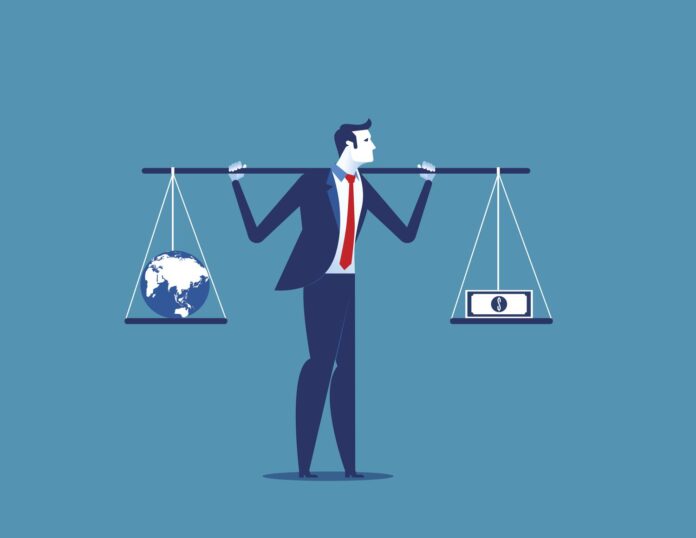“The Mystery of Capital: Why Capitalism Triumphs in the West and Fails Everywhere Else” written by a Peruvian economist, Hernando De Soto, is an insightful contribution, which addresses one of the most important questions about why capitalism does not produce the best results in third world countries. De Soto identifies the absence of formal property rights as the fundamental reason for the failure of capitalism in the developing world. He suggests the strategies and policies that could help poor nations to convert their assets into useful capital through an appropriate and easily accessible legal system. Furthermore, he also denies the Western perception that underdevelopment among poor nations is due to culture, religion or the lack of entrepreneurial skills. The book consists of seven chapters. Chapter 1 deals with the details of the book’s theme and identifies the factors behind successful capitalism in the West and ailing Third World Economies. Chapter two through six gives details of Soto’s mysteries, and chapter seven concludes his thoughts.
De Soto identifies that even though the poor have valuable assets, savings and entrepreneurial expertise, but lack of legal title to property prevents them from generating additional value/capital from their assets. The chapter highlights that 80% of humanity has assets, but “they do not have the process of representing their property to create capital”. Due to these factors, they cannot use their valuables as collateral, which is the main source of funds for new businesses in the United States. The author notes that capital, one of the most critical components of prosperity, has received the least attention. Neglect has shrouded it in mystery – in fact, in a series of five mysteries”. De Soto sums up his main findings in the form of five mysteries which include, the mystery of missing information, capital, lack of political awareness, missing lessons of US history, and legal failure.
In the “Mystery of missing information”, Soto reveals the issue that people’s resources are commercially and financially invisible, No one knows who has what or where, and who is responsible for the fulfilment of the obligations. As a result, potential capital cannot be traced and recognized, hence build up dead capital. It is the potential of capital for development, if poor nations could transform that dead capital into live capital. However, the author did not provide details on how this conversion would take place by simply recognizing official property rights without providing a favorable business environment.
In Soto’s words, the potential of anything is greater than the thing itself and it is in fact the central theme of the book: the mystery of capital. Assets must not be viewed only in their physical or conceptual form, but in their potential. In the “Mystery of Capital”, Soto elaborates that capital is not merely a physical structure, a stock of labor or money, but a potential for generating surplus
value. To unravel the mystery of capital, Soto draws on the thoughts of Adam Smith and Karl Marx who see capital as the driving force of a market economy. Moreover, De Soto emphasizes that capital nowadays is confused with money. Soto asserts that property just like energy is a concept that we cannot see, but experience through its effects. From the author’s perspective, the effects of formal property systems assist Western citizens to generate capital.
In the “Mystery of Political Awareness”, the author underlines the political blindness to the extralegal sector and the ignorance of the needs of mass urbanization. The informal arrangements reduced the opportunities for enterprising minds which results in lower productivity. Entrepreneurship thrived in the west due to integrating the legal property systems that lead to wider market network and significantly increase the potential to create capital. The author stresses the developing nations to reform the legal structure and property laws to adapt to new urban reality for a peaceful transition to the market economy. He narrates the historical experience of European politicians who “finally understood that the problem was not people but the law, which was discouraging and preventing people from being more productive.”
In this book, author particularly describes the history of property rights in various states of US and asserts the importance of this transition to capitalism for developing countries. USA face similar problems in the past when it was a developing economy and struggling to cope with the law and disorder of migrants, squatters, gold diggers, armed gangs, illegal entrepreneurs”. The book acknowledges that developing countries have an official property system, but the problem is the inaccessibility by most citizens. Instead of improving the law, governments in the developing world believed that the root cause of the problem was the poor, not the law.
De Soto summarizes that capitalism is in crisis outside the western world because third world countries failed to globalize the capital within their own jurisdiction. The general perception in those economies is that a large part of the population lacks assets. However, Soto looks into it from a different perspective. Soto heavily focuses on the role of property rights in the development process, however, he ignored other important policy measures which included institutional governance, efficiency and technological progress etc. According to Soto vast majority of the poor possess assets but lack access to credit because property ownership is not recognized legally. However, contrary to Soto’s claims granting formal ownership rights has not improved the access to credit even in Peru. So formalizing property rights is not the only solution to solve the puzzle of underdevelopment but other complementary socio-economic policy reforms are also necessary. Moreover, De Soto provides empirical support to his arguments but his research is confined to only a few countries. Adding up more empirical evidences from other third world economies would help us to better understand the phenomena. Furthermore, De Soto mainly highlighted the urban setup and ignored that a large part of the population in the third world resides in rural areas having significant weightage in global poverty and underdevelopment.




